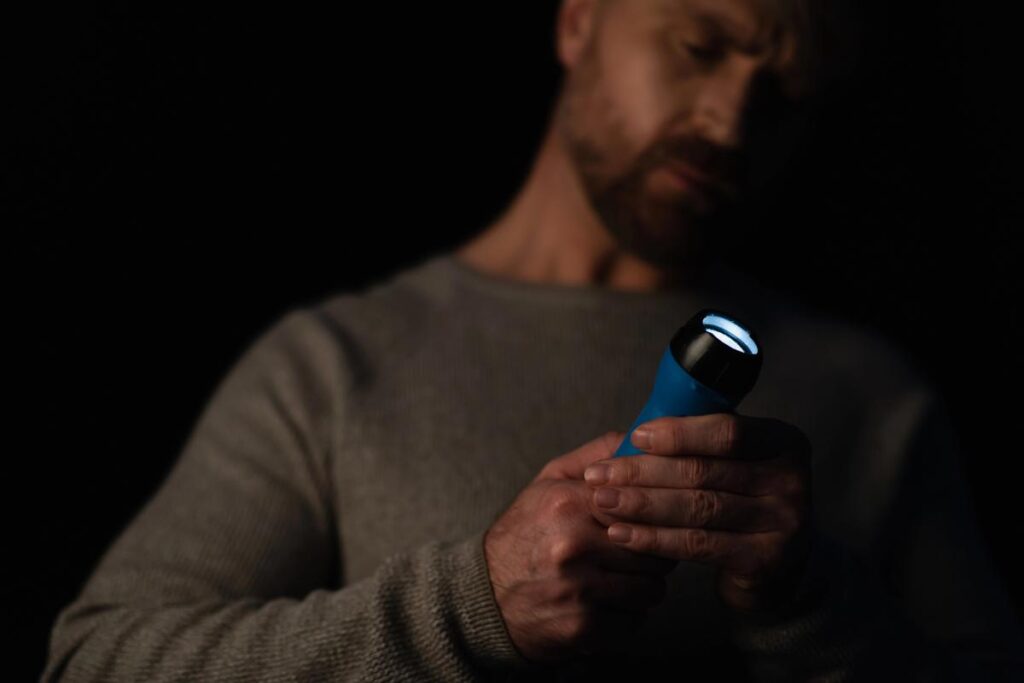
Power outages are no longer rare events that only happen during the occasional thunderstorm. Between overloaded grids, extreme weather, and unexpected blackouts, it’s becoming more and more common for households to go without power, sometimes for hours or even days. And if you’ve ever found yourself scrambling to find flashlights or trying to keep the fridge closed to save food, you know how stressful those situations can be.
The good news is that a little preparation now can go a long way in making sure your home and family are ready the next time the lights go out. These simple steps will help you feel more confident, organized, and less frazzled, whether you’re dealing with a short brownout or a major storm.
1. Create a Family Emergency Plan
First things first: have a plan. When the power goes out, everyone in your household should know what to do. That includes where to find flashlights, how to check in with each other, and what tasks each person is responsible for. If you have kids, walk them through the plan ahead of time so it feels familiar, not scary.
Don’t forget to think about pets, refrigerated medications, or elderly neighbors who may need help. Print out your plan and keep a copy somewhere easy to grab, like in your kitchen drawer or taped to the inside of a cabinet.
2. Invest in a Reliable Home Battery System
If you think the only energy backup available is a noisy gas-powered generator, think again. These days, home battery systems offer a much more convenient (and quieter) way to keep the essentials running during a power outage.
If you’re looking for a dependable backup that won’t require you to store gasoline or fumble with cords, the OCEAN Pro home battery is a great option to consider. It’s designed to store energy from solar panels and can power your refrigerator, Wi-Fi router, lighting, and other critical appliances when the grid goes down. It’s clean, quiet, and smart—exactly what a modern household needs to stay comfortable and safe without missing a beat.
Not only is it ideal during outages, but it can also help you manage your overall energy use and save money in the long run. Think of it as a long-term investment in peace of mind.
3. Stock Up on Battery-Powered Lights and Lanterns
Nothing adds chaos to an outage like stumbling around in the dark. Make it easier on yourself by keeping flashlights and battery-powered lanterns in easily accessible spots throughout your home such as the bedrooms, bathrooms, kitchen, and living room.
Be sure to check batteries regularly (set a reminder every six months!) and consider keeping a few solar-powered or rechargeable options on hand. LED lanterns are especially handy because they offer hands-free light and can usually run for hours on a single set of batteries.
4. Keep a First Aid Kit Fully Stocked
In an emergency, you don’t want to be searching for band-aids or wondering if your kids’ fever medicine has expired. Take some time to build a well-rounded first aid kit and check it a couple times a year to make sure everything is up to date.
Include essentials like adhesive bandages, antiseptic wipes, pain relievers, allergy meds, and a thermometer. If someone in your family takes daily prescriptions, consider asking your doctor or pharmacist about keeping a small backup supply on hand, especially if refills might be delayed during a prolonged outage.
5. Build a Simple Shelf-Stable Food & Water Supply
You don’t need a full-blown prepper pantry, but having a few days’ worth of shelf-stable food and water can make a world of difference. Focus on things your family will actually eat: canned soups, beans, tuna, granola bars, nut butters, crackers, and shelf-stable milk or protein shakes.
Store at least one gallon of water per person per day, for a minimum of three days. You can also add electrolyte powder or flavored drink mixes to make hydration more appealing for kids. Label your supplies and rotate every few months to keep things fresh and reduce waste.
6. Charge Up Power Banks and Backup Devices
Before the next storm hits, take a moment to charge all your power banks and portable devices. Having one power bank per person (or at least one or two solid ones) ensures you can keep your phone charged for communication, weather updates, or even just entertainment.
If possible, invest in a solar charger or one of those hand-crank emergency radios that also charges phones. It’s not the most glamorous item in your emergency kit, but when you need it, you’ll be so glad it’s there.
7. Protect Important Electronics with Surge Protectors
Power outages often come with power surges—those sudden jolts when the electricity cuts off or comes back on. Surges can fry your electronics, especially expensive or sensitive devices like laptops, TVs, and appliances.
Make sure you’re using surge-protected power strips, especially in high-risk areas like your office, living room, and kitchen. They’re relatively inexpensive and can save you from having to replace big-ticket items down the road.

8. Have Entertainment Ready
If we’re being honest, a power outage can feel like an eternity when you’ve got bored kids (or even just a bored spouse). Make a blackout box filled with low-tech entertainment: books, puzzles, coloring supplies, playing cards, and board games that don’t require batteries.
If you have teens, consider downloading a few audiobooks, podcasts, or movies to devices ahead of time. It’s also a great time to pull out that craft kit or science kit you’ve been meaning to use.
9. Stay Informed with a Weather Radio or Alerts App
Staying connected during an outage is critical. A battery-operated or hand-crank NOAA weather radio can give you important updates even when the internet is down. There are also several free apps (like FEMA, Red Cross, or local emergency services) that send push alerts for severe weather, power restoration timelines, and shelter locations.
Download a couple of these apps now and test your notification settings so you’re not caught off guard. If you live in an area that’s prone to storms, consider keeping your devices on low-power mode whenever bad weather is in the forecast.
While no one enjoys the idea of being without electricity, a few smart steps can make the experience a whole lot easier to manage. Whether it’s keeping your family warm, your food fresh, or your sanity intact, these preparations help take the panic out of the unknown.
